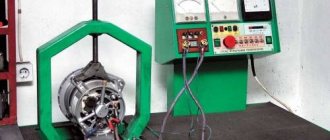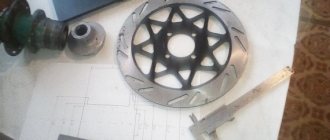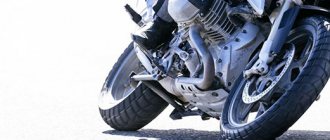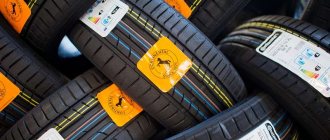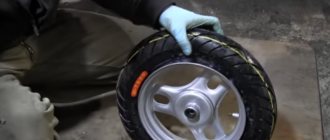Have you ever encountered a situation where you need to flare a tubeless tire on the road and at the same time inflate the wheel a little and you need to do all this without a pump, since a regular car pump and an electrode pump on a tubeless tire are pointless. The air will simply escape along the edges of the tubeless, since the tire does not sit tightly on the rim. You can place it on the disk only with high pressure or a very fast pumping speed - such as compressors at a service station. But not a common automobile compressor, and certainly not a hand pump.
Well, actually, the situation, for some reason, a situation arose on the road when it was necessary to carry out this very operation of beading a tubeless tire - the spare wheel came off, the tire was deflated, the spare wheel was beaded from a damaged one to a whole one, etc. How to do this, so to speak, in the field.
Extreme mountain bike
Drivers know that it will not be possible to inflate a tubeless tire with a conventional pump after installing it on the rim - the air will simply come out of the gap between the rim and the tire rim.
In order for the tire to “sit” tightly in its place on the rim, you need to supply a large portion of air in a short time, for example from a compressor receiver, as is done at a service station. But not everyone has such compressors in their garage, so how can you get out of the situation and pump up the “tubeless”, using what is called “improvised means”? It's actually not that difficult to do.
To do this you will need some gasoline, carburetor cleaner, WD-40, or any other flammable liquid. Place the fully assembled wheel on the ground and spray a very small amount of flammable liquid in a circle into the gap between the tire and the rim. Do not pour too much gasoline, about 10 grams is enough. After this, quickly ignite the resulting flammable liquid vapors in the tire (just throw a lit match into the area of the gap between the tire and the rim).
There will be a popping sound and the tire will snap into place tightly. Now the tire can be inflated with a conventional pump to the required pressure.
If this method seems too extreme to you (after all, you need to be careful with fire and gasoline so as not to burn the entire car), you can use another method. Inflate any car wheel or spare tire to a pressure of about 4 atm. Remove the hose from the pump and connect its free end (the one without the fitting) to the nipple of the tubeless tire that needs to be inflated (the spool from the nipple must be removed). Now connect the other end of the hose, on which the fitting is located, to the “inflated” wheel. As a result, the air from the inflated wheel will very quickly be distributed into the tubeless tire, and it will fall into place on the rim. Now you can remove the hose, screw the spool valve into the tubeless nipple, and pump it up in the usual way to the required pressure.
Any motorist will confirm that it is very problematic to inflate an empty tubeless tire on your own, unless you have a high-pressure compressor in the garage, which is used in tire shops and service stations. In order for the tire to fit tightly to the rim of the disk without a gap, you need to supply a large amount of air into it in a short period of time, which is impossible to do with a conventional pump. What to do in a situation where there is no service station nearby and the tire is empty?
There are several ways to inflate a tubeless tire using available tools. The main task is to install the tire at the mounting location. When it closes tightly, it can be inflated using a conventional pump.
Sequence and features of work execution
It is easier to repair the wheel yourself when another tube is available. To deflate a tubeless tire without leaving gaps is quite difficult - it requires a sharp increase in pressure, which only a high-performance compressor can generate. But if you still have to change the tires, you can use the “folk method”. After unscrewing the nipple, pour some gasoline inside. Shake the wheel and ignite the steam coming out through the hole. There will be a small explosion causing the sidewalls to settle on the rim. Regarding safety, this procedure is not capable of breaking the tire, since it has a good margin of safety. But this should be done not in the garage, moving away from the cans of gasoline at a great distance, so as not to provoke a fire. It is not recommended to perform such manipulations with a new copy, since unburnt gasoline will remain inside. Wear from it will accelerate several times.
Rear-mounted tires are more likely to wear out and puncture because they account for approximately 70 percent of the weight. The reason is simple - the driver's body is located closer to the rear than to the front.
To remove the rubber, you need to release all the air and tear the side cord off the rim. The work is difficult because it cannot be done manually. If you have a vice in your garage, use it to press the rubber down. If they are absent, you are allowed to lightly run over the surface with a car wheel. Moreover, it is better to use a passenger vehicle - a truck or jeep can bend the disk, after which you will have to purchase a new one. You need to trample on the sidewalls, bringing them down to the central part of the rim. You can use a simple shovel to insert the tip between the tire and the rim and apply pressure to dislodge the edge of the tire.
For dismantling, it is recommended to use narrow pry bars. The use of thick, wide mounting devices for a car causes additional difficulties when performing work on a small-diameter wheel. Alternatively, long, heavy-duty screwdrivers can be used. If it is inconvenient to carry mounting kits with you, any owner will always have a pair of screwdrivers.
Beading is carried out from the nipple. Starting from the opposite part, the nipple will prevent the wheel from sinking inside the rim. If you see that something is preventing the sides from sliding into the middle, determine the reason and get rid of it. You shouldn’t rely on your own strength, because you can easily break the tire cord. And if you have a lot of strength, the rim itself will break. To bead a tire using narrow screwdrivers or mounting holders, the part being put on should be held in a special recess on the rim.
Before beading the rear wheel on a scooter, always remember the distance between the screwdrivers - it should be a maximum of two to three centimeters. It is recommended to disassemble the wheel so that the rim lies on the ground with the side in working position near the muffler. This should be done because if dismantling is careless, the scratches will not be very noticeable, because they will be covered by a muffler. When changing an old tire that you don't have to put back together, lubricate the bead with soapy water or oil. This will greatly simplify and speed up the replacement process. Oil can corrode the tire, so treat the surface with a degreaser before starting installation. Installation of the tire is carried out exclusively using a soap solution.
Flammable liquids
The wheel must be placed on the ground and the spool must be twisted off it. Inject a small amount of flammable liquid (5-10 ml) into the gap between the disk and the tire and set it on fire. The vapors will ignite and create pressure in the air, which will help the tire get into place. Then it can be easily pumped up with a conventional pump, having first screwed in the spool.
Gasoline, carburetor cleaner, WD-40 and other flammable liquids can be used as fuel. The main thing is not to overdo it with the quantity and have time to move to a safe distance, since the clap can cause the wheel to bounce above the ground.
Why is it important to keep your tire pressure normal?
Tire pressure is an important parameter; it is responsible for the main technical characteristics of the wheel. The car manufacturer calculates this parameter in advance and indicates it in the recommendations.
If the tire is under-inflated, this will primarily lead to increased fuel consumption. This is due to a decrease in the rolling coefficient. Uneven traction with the road surface also occurs, leading to a decrease in traffic safety; this is felt in the form of more difficult driving. Tire wear increases; with a strong drop in pressure, the rim of the disc can cut the sidewall.
It's also not a good idea to overinflate your tires. The tire will wear unevenly and the middle part of the tread will suffer. Increased pressure can cause an explosion and complete destruction of the tire on the road. In addition, wheel stiffness will increase and braking efficiency will decrease.
tubeless wheel yourself.
To seat the rigid sidewall of a tubeless tire on the disc, a rapid increase in air pressure is necessary so that it (the air) does not have time to escape through the cracks. In other words, the question is to come up with a powerful compressor from improvised means.
There is a car, it has a dead Chinese compressor, or even a hand pump - it doesn’t matter. There are also wheels, including a spare wheel.
1. Inflate the spare tire until it is stupefying, 4-5-6 atmospheres.
2. Remove the hose from the pump/compressor.
3. Unscrew the spool from the inflated wheel and place the free end of the hose on the valve.
Where to find the correct tire pressure for your car
The tire pressure is determined by the car manufacturer; through tests, he finds out to what limits the tires can be inflated. The data must be indicated in the documents accompanying the vehicle.
For greater simplicity, additionally indicate the parameters in the plate. It can be found on the A-pillar of the car or on the inside of the gas filler flap. In rare cases, a plate with basic technical parameters may be located on the door. All you have to do is find the sign on your car and see what pressure to pump the tires to.
Login to the site
4. Unscrew the spool from the inflated wheel, holding the air with your finger, place the tip of the hose on the valve and observe the process.
5. Adjust the pressure in all wheels.
From the Site Administrator: this is how you can pump up a tire using gasoline:
A few more articles from the section “You and the car”
On the “Books - Free” page you can FREE download some materials from the “Bonus” section immediately.
How to inflate a tubeless truck tire
Modern tubeless wheels, although very reliable, are very afraid of sudden side pressure.
For example, if you successfully drive near a concrete curb, you can easily take off your shoes.
Needless to say, this most often happens with underinflated tires, but tubeless tires with normal pressure also have a chance to take off their shoes on the road.
Now I think it’s clear how to take off the car’s shoes, but now how to put it back on?
You can't simply inflate a tire.
How to disassemble a wheel on a scooter (photo and video)
Among inexperienced owners, the question often arises about how to properly disassemble and then bead a tire on a scooter. The work is simple, but it has a number of nuances. If you do not follow a number of recommendations, a perfectly suitable tire can easily be damaged. Even if the current tires are in poor condition and there is no point in putting them back, it is still important to do it correctly without damaging the disc.
How to inflate a tubeless tire yourself. Several ways to inflate a tubeless tire
A powerful compressor is needed.
The first thing that happens during inflation is that a powerful air stream inflates the tire and places its beads on the rim.
And then the tubeless wheel is inflated to the required pressure.
How can you press loose tires back to the sides of the rim on the road? After all, without this it is useless to download it.
There is a way, and as usual it’s simple.
Unscrew the cap and nipple from the wheel.
Pour a teaspoon (no more) of gasoline inside the wheel, so that a few drops remain on the outside of the rubber.
Lightly shake the wheel, move away a couple of meters, light it and throw the lit match onto the wheel in the place where you left some gasoline.
The gasoline will ignite and after a few seconds the gasoline vapor inside the wheel will ignite.
And it will not just catch fire, but a sharp expansion of gases will occur inside the wheel, similar to what constantly occurs in an engine.
The tubeless tires are in place and now, having screwed the nipple into place, you can inflate the wheel with a regular pump.
Source stroyvolga.ru
Nowadays it’s impossible to live without a car, but few people know how to inflate a tubeless tire. Now we will talk about how this procedure occurs. Let's take a truck as an example. It should be said right away that it is not easy to do this work on your own, but if the service station is far away, you will have to do it.
Fire extinguisher
But this is perhaps the most unusual way to inflate a tire. After conducting an experiment with a large 6-kilogram fire extinguisher, we managed to increase the pressure to a completely ridiculous value of a couple of tenths of a bar. And this despite the spool being turned out. Everything around was covered with a rather nasty powder. Unacceptable!
The average car owner usually has a powder type fire extinguisher in the trunk. A rather large-volume powder fire extinguisher worked extremely poorly. It was not possible to inflate the wheel.
The average car owner usually has a powder type fire extinguisher in the trunk. A rather large-volume powder fire extinguisher worked extremely poorly. It was not possible to inflate the wheel.
First, about the reason that may cause difficulties.
The tire did not fit into place; there was a gap ranging from five millimeters to five centimeters. Here the pumps will not help fill the cargo wheels with air. It will come out through the resulting gap. At specialized points, pneumatic shock is used. Of course, your best bet is to go to a tire shop. But if there isn’t one, then how to inflate a tubeless truck tire?
Drivers are inventive people and were able to come up with several ways to cope with this problem.
Using an inflated wheel.
A spare tire is taken and inflated with pressure up to four atmospheres. The hose is removed from the pump, the tube is put on the nipple of the tire that needs to be inflated. Remember, be sure to remove the spool. The second end of the hose is put on the tire with pressure and fixed. Under high pressure, the air from the filled tire passes into the empty one, and the tire snaps into place. After the work is done, the hose is disconnected, both wheels are pumped up to the required pressure.
Another way to inflate a tubeless truck tire.
Use of flammable liquids.
The wheel falls to the ground. The spool must be unscrewed. Apply a small amount of gasoline or carburetor cleaner to the gap between the rim and the tire.
The second step is to carefully throw a match from afar and ignite the vapor. When ignited, they increase the volume of air; after a pop, the tire will return to its place.
Sometimes the unexpected happens and the wheel can jump high. So be careful.
After the event is completed, the spool is screwed in and the tire is inflated with air.
You can also inflate a tire using a rope.
Wrap the tire along the tread line. Then you tighten it and fix it. The edges of the tire are pressed against the rim. After this, you can remove the spool and start inflating the tire. As it fills with air, the rope will fly off on its own.
As you can see, the methods are simple and will help you cope with the problem. Of course, everyone should do their job and it is best if a specialist helps inflate the tires. We will be glad to see all your statements and comments.
Source tochka.kiev.ua
What pressure should I pump?
How many atmospheres to fill is determined experimentally. I take a small pressure gauge with me on the trail and start riding, gradually reducing the pressure until it feels good in terms of smoothness, grip, and roll-up. As soon as the roll has dropped and the tire begins to “float” - stop, return to the previous level. It's simple, experiment once and then stick to these values.
Before I started using tubeless, my bike had some average pressure for all roads. Now, before leaving home, I inflate the tires for the specific style of the current ride. Since I most often ride aggressively on hard rocky trails, I have a MTB setup, as I wrote earlier - 14/21psi, but if I'm going to ride far on asphalt, then I use 20/28psi. The behavior of tires at different pressures is very different, you want to push the maximum.
We'll tell you and teach you
After mounting a tubeless tire on a wheel rim, it is not so easy to inflate it. If a tire repair shop or service station is far away, you have to perform this procedure yourself.
Why is everything so difficult
The problem is that usually after mounting the wheel between the tire and the rim of the disc there is a gap of 5 millimeters to 5 centimeters or, as professionals say, the tire “does not sit in place.”
There is simply no point in inflating such a tire with a foot pump, or even more so with a hand pump - all the air pumped by the pump will exit through the above-mentioned gap.
At tire service centers, this issue is solved simply: using pneumatic shock devices, powerful compressors, boosters or inflators, a large amount of air is supplied into the gap between the rim and the tire in a short period of time.
After the tire “slams shut” and sits in its mounting location, air is pumped in the usual way - through the tire nipple using a standard hose with a pressure gauge.
What to do if there is simply no equipment for pneumatic impact?
Over the years of operation, motorists have invented several ways to inflate tubeless tires. From safe to risky, from labor-intensive to effortless. Which method is more acceptable is up to you to choose.
Use of flammable liquids
Place the fully assembled and mounted wheel on the ground. Be sure to unscrew the eolotnik from the nipple.
Apply a small (10 to 20 ml) amount of gasoline, WD-40 or carburetor cleaner in a circle into the gap between the tire and the rim.
Next, in a safe way (using a newspaper torch or throwing a match from afar), ignite the flammable liquid vapors formed inside the tire. They will ignite, increase the volume of air, and after a noticeable pop, the tire will sit tightly in its seat.
It is possible that the wheel can jump up to half a meter above the ground. Therefore, be prepared for such surprises and exercise caution.
After screwing the valve into the nipple, inflate the tire in the usual way using a pump.
Using an inflated tire
Pump the spare tire or wheel on the car to a pressure of about 4 atmospheres. Remove the hose from the pump and place the side that was removed from the pump tube onto the nipple of the tubeless tire that needs to be inflated. The spool must be unscrewed from the tire.
Place the second end of the hose with a lock onto the fitting of the tire with excess pressure and secure it. Air from the “inflated” tire will flow under pressure through the hose into the empty tire and it will “sit back into place” quite quickly.
All that remains is to disconnect the hose first from the donor wheel, and then from the recipient tire, screw the spool into the nipple and inflate both wheels to the required pressure.
Rope
If you wrap a piece of sling or rope around the tire in a circle, along the tread line, and then pull the rope and fix it, its working surface will be slightly deformed, but the edges of the tire will be pressed against the rim of the disk.
After this, you can screw in the spool and inflate the wheel without worrying about the rope - it will slide off the wheel itself as it fills with air.
These methods, simple and not so simple, will always help in a difficult situation, far from service points, and inflating a tubeless tire will no longer be a difficult and overwhelming task for you.
Source goodmaster.com.ua
Rim and tire width match
An important factor is that the rim must match the width of the tire. Here are the options available if the sizes do not match:
Narrow: pear-shaped profile, steering worsens, rolling resistance increases, the tire feels like a roll (floats)
The contact patch is correct, the tread cubes are in their places. Minimum rolling resistance with maximum grip.
Wide: vibration absorption deteriorates, side studs catch the road when moving straight, poor steering
Bicycle rim and tire size correspondence table:
| Rim width: | Tire width: |
| 23mm | 2.0-2.25 |
| 25mm | 2.25-2.35 |
| 25-27mm | 2.35-2.50 |
| 30mm | 2.60 |
| 35mm | 2.80-3.0 |
Please note that modern wheels use wide rims. When I first started riding KK, ten years ago, we were running 17mm rims and 2.10 tires. Over the years, the correct dimensions have crystallized experimentally. Today there is simply no point in buying rims or wheelsets narrower than 24-25mm and tires smaller than 2.25 if you are going to ride on the trails.



